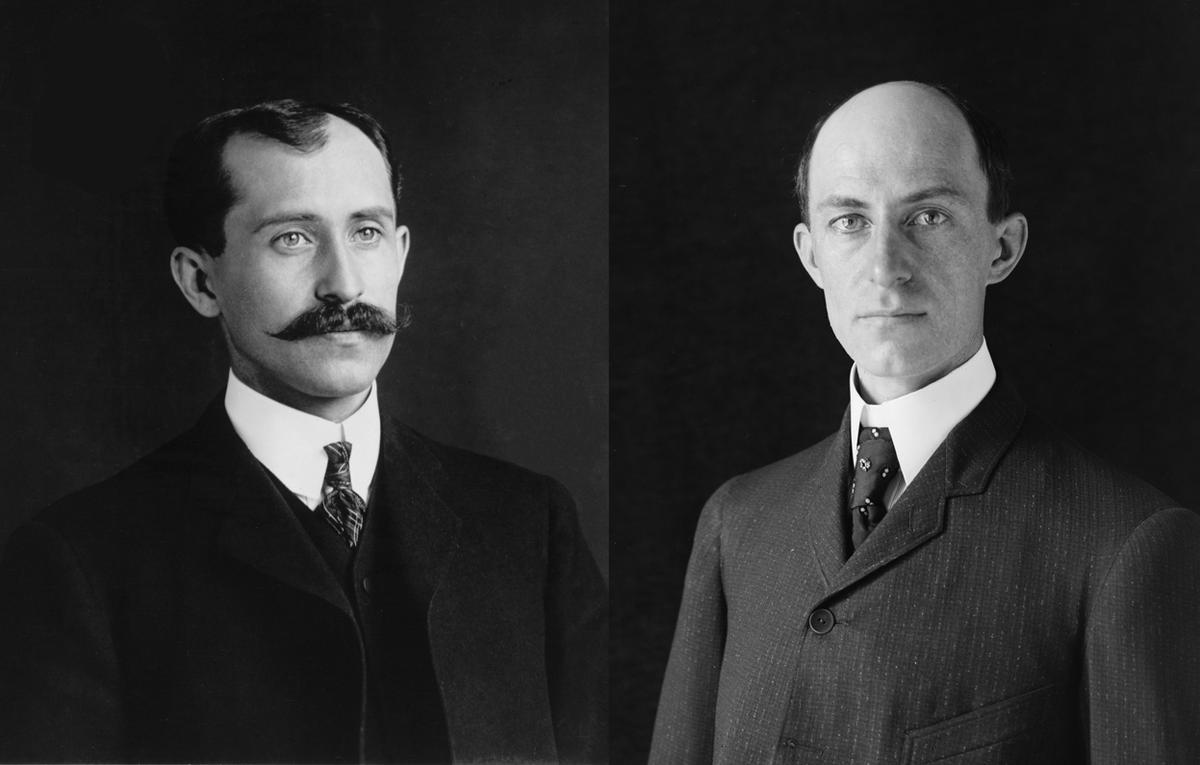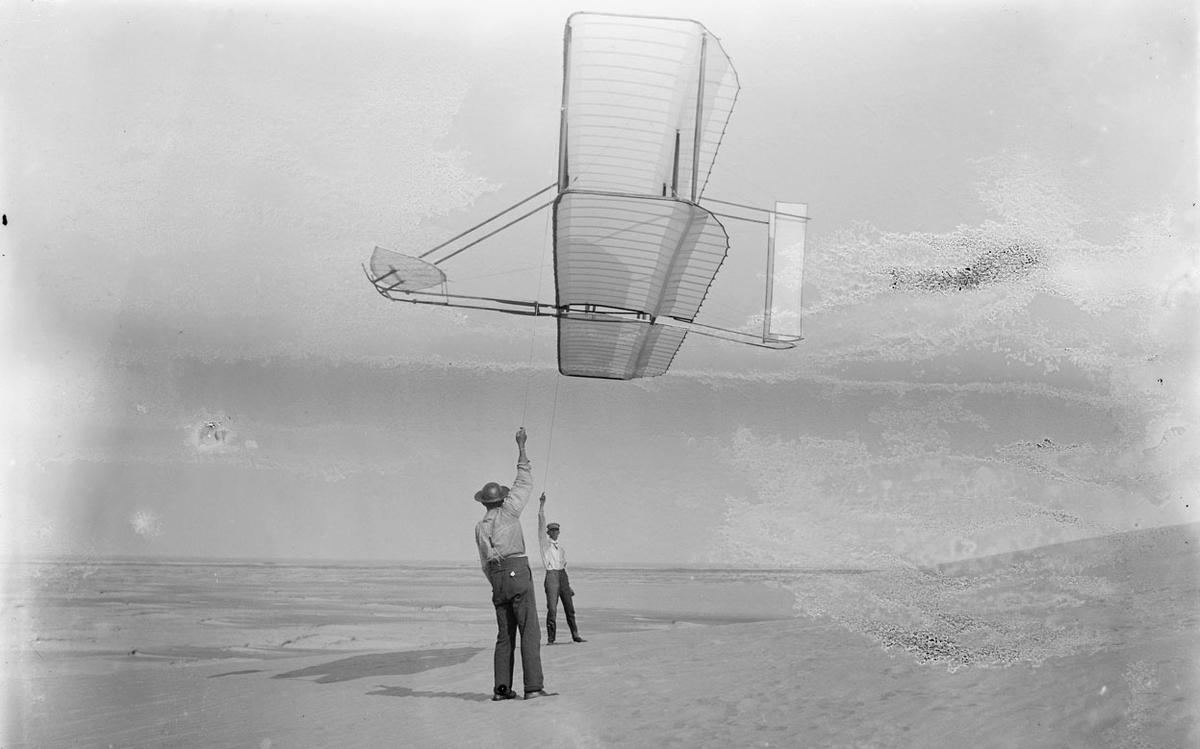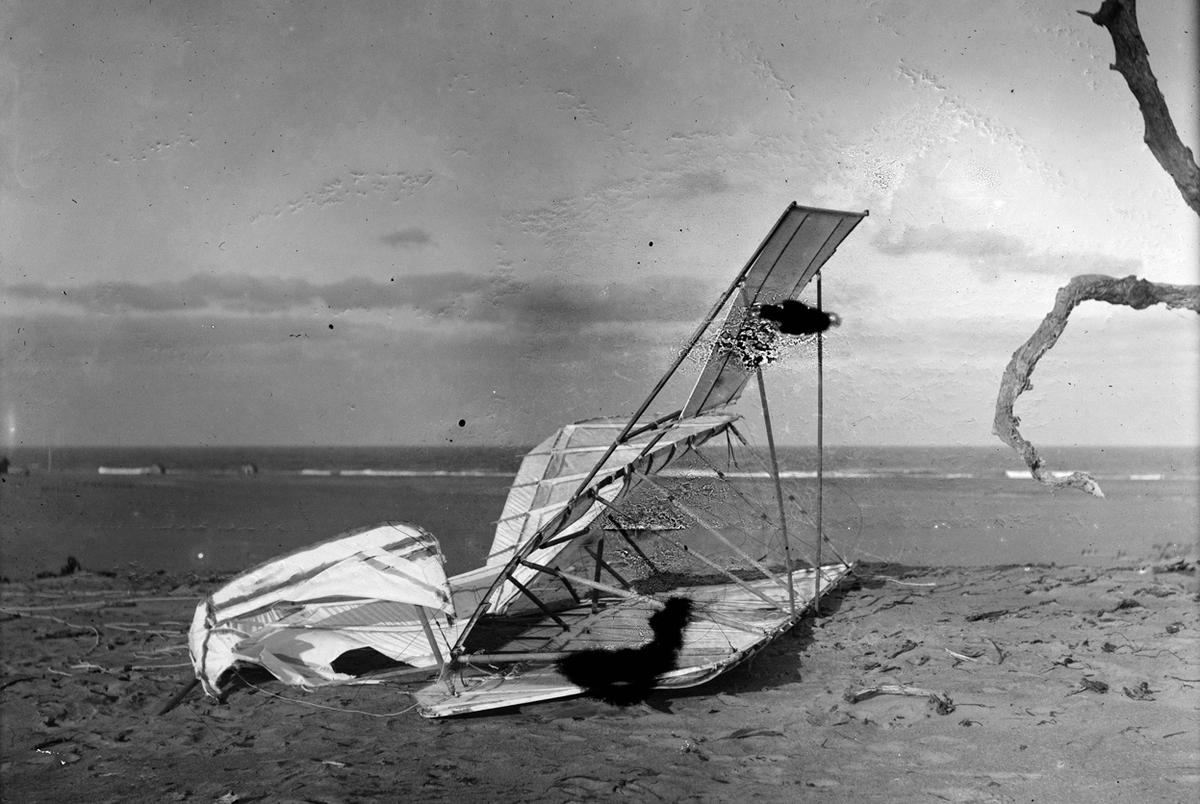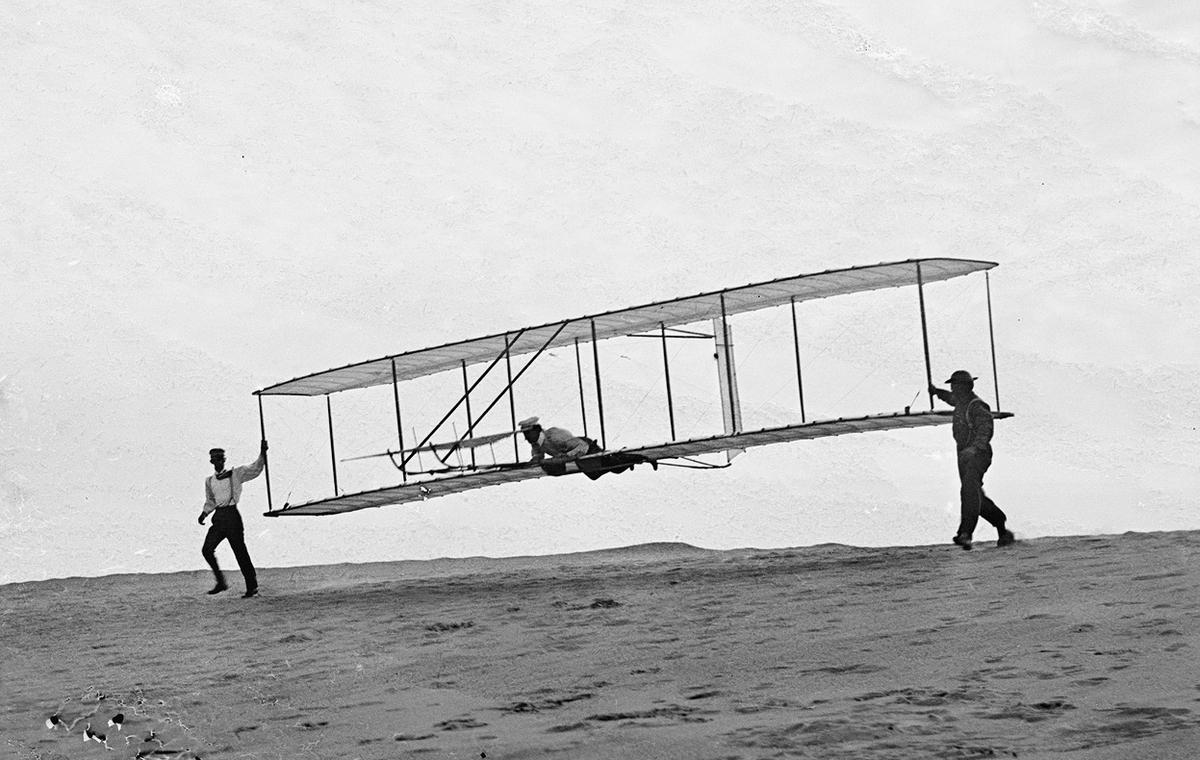Here at First Flight Rentals, we’re partial to the amazing story of the Wright Brothers. Their history here in the Outer Banks and the historic first flight is something we love to share to guests to the area.
North Carolina is known as the “first in flight” due to the innovation of the Wright brothers, two bicycle repairmen who sought to conquer the sky. Wilbur and Orville Wright were born in Dayton, Ohio, a location from which they conducted the majority of their flight research — but it was on the Outer Banks of North Carolina that they eventually made history.
Early Years

The Wright brothers were enamored with the idea of flight from an early age — exemplified by avid kite-making and an unusual adoration of helicopter toys. They began their official foray into the idea of human flight in 1899 with an accumulation of information on gliders and wind speeds of varying locations around the country.
This research brought them to Kitty Hawk, North Carolina (now part of Kill Devil Hills) — at the time a meager fishing village on the Outer Banks offering strong winds, isolation, and sand dunes, which were ideal for their purposes. In September of 1900, the Wright brothers journeyed for the first time to Kitty Hawk, North Carolina to begin their glider experiments.
Development Age

Their first glider was seventeen feet long and comprised a forward elevator that generated much less lift than anticipated. The glider functioned more or less like a giant kite, and although it did not fly, it allowed them to accumulate data necessary for future experiments. The brothers successfully completed short periods of free gliding, but after two full weeks left the Outer Banks to return home, somewhat disheartened. However, what they had gained was a better understanding of the kind of control necessary to manipulate a machine of the sky.
The Wright brothers quickly identified the three most invaluable elements of flight: properly designed wings, a control system that provided for both latitudinal and lateral function, and an equally lightweight and strong enough engine to power the machine.
The year 1901 served as a glider development era, during which time they honed their research and translated it into tangible form, represented by the creation of the largest glider in history. Although promising, the machine was unruly and only provided a portion of the necessary lift to achieve true flight. They succeeded in gliding more than three hundred feet but the machine’s unpredictably forced them to return home and revisit their calculations.
Refinement Era

Throughout 1902, they implemented their research into a more comprehensive machine — incorporating the necessary flight elements and polishing all aspects of control including pitch, wing-warping, and roll. After more than six hundred glides they were convinced they had finally developed a suitable mechanism for flight.
In early fall of 1903, the Wright brothers returned to the Outer Banks in an attempt to prove it. Although they were prepared in theory, a series of unfortunate events highlighted by the breakage of engine parts on numerous occasions forced Orville to return to Dayton on two occasions to fetch new propeller parts. The brothers remained flightless.
First In Flight!

On December 17, 1903 the Wright brothers were finally ready to attempt the first manned flight. It was Orville’s turn in the cockpit and with his brother running alongside him, the Wright brothers launched the first manmade aircraft into the sky — in a controlled, elegant fashion that garnered recognition from around the world. The flight lasted only twelve seconds — but was forever etched in history.
The Wright Brothers National Memorial is located on those iconic grounds and now serves as a public exhibition to continue honor North Carolina’s “first in flight” story to visitors from around the world. The memorial includes the actual flight line, reconstructed camp buildings, a monument, and a visitor center.